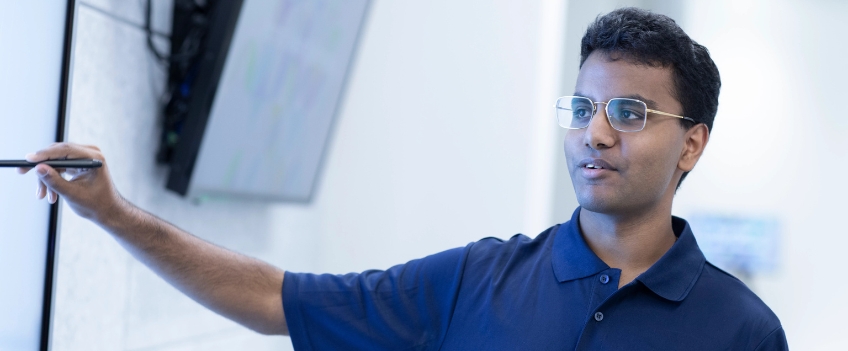
Honors Theses
Copyright Statement
All rights reserved. This publication is intended for use solely by faculty, students, and staff of Nova Southeastern University. No part of this publication may be reproduced, distributed, or transmitted in any form or by any means, now known or later developed, including but not limited to photocopying, recording, or other electronic or mechanical methods, without the prior written permission of the author or the publisher.
Bottlenose Dolphin Contact Exchanges in Mother-Calf Pairs at the Roatan Institute for Marine Science
Date of Award
2023
Document Type
Honors Thesis - NSU Access Only
Department
Halmos College of Arts and Sciences and the Guy Harvey Oceanographic Research Center
Honors College
Farquhar Honors College Thesis
Honors College Dean
Andrea Nevins, Ph.D.
Home College Dean
Holly Lynn Baumgartner, Ph.D.
Faculty Advisor
Amy C. Hirons, Ph.D.
Faculty Advisor
Kathleen Dudzinski, Ph.D.
Abstract
The relationship between a dolphin mother and her calf has been well studied, but details regarding tactile exchanges within these dyads are limited. Contacts between five adult female bottlenose dolphins (Tursiops truncatus) and their calves, with data from three pairs analyzed statistically, were examined from video collected in October 2017, 2018, 2019, and January 2018. Of 312 contact events documented, 289 had a clear initiating dolphin who started the behavior. Calves initiated 65.7% (N=190) of contacts, with 82.6% (N=157) categorized as affiliative, while 77.8% (N=77) of mother-initiated contacts were affiliative; thus, the overall trend for mother-calf contacts was affiliative. Mothers initiated contact with the dorsal fin significantly less often (N=3), while calves initiated with their dorsal fin significantly more often (N=40), especially in one-year-old (C1) calves (N= 33). These results are likely an artefact of the infant swim position, with calf below mother. The body was used to initiate contact significantly more in C3 calves (N=47) and significantly less in C1 calves (N=22). Only C2 calves initiated agonistic contact with their rostrum (N=4), 75% of which was initiated by a single calf. Body part use by mothers showed no consistent pattern with calf age. Mothers used their pectoral fin to initiate contact with their C2 calves significantly more than expected (N=11). Since 72.7% of these contacts came from one mother, a specific maternal style may be present. Only one mother used her rostrum with her C3 calf to initiate agonistic contacts; all others used the fluke. Several variables, including individual preference, sex of the calf and maternal experience, may explain some of the patterns in contact, but a larger sample size is needed. Still, these results support the notion that mother-calf dyads share more affiliative than agonistic contacts, expanding our knowledge on tactile mother-calf relationships.
NSUWorks Citation
Savanna Duda. 2023. Bottlenose Dolphin Contact Exchanges in Mother-Calf Pairs at the Roatan Institute for Marine Science. Capstone. Nova Southeastern University. Retrieved from NSUWorks, Halmos College of Arts and Sciences and the Guy Harvey Oceanographic Research Center. (25)
https://nsuworks.nova.edu/honors_theses/25.

